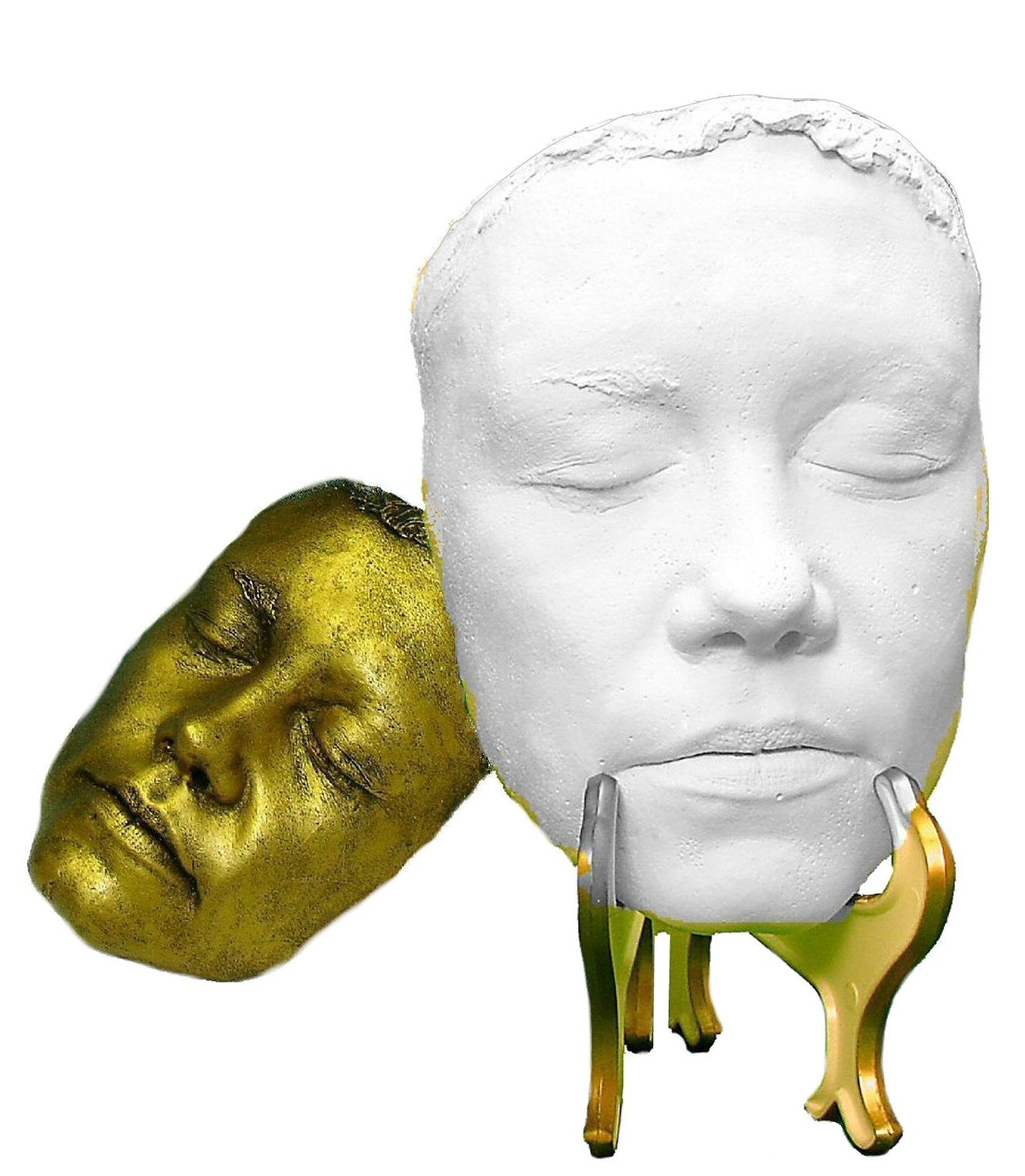We offer 24-hour chat support

How to Make the Perfect Face Casting
Be certain to read all of the instructions that are included with your material and your kit (such as ArtMolds’ Face Casting Kit) before you begin, so you know what is involved.
You should explain the entire process to your model, to be certain that there will be no confusion, and they will know what to expect. It is a strange sensation for the model, so it’s best not to have any surprises.
There are several methods to making a mold of a face before you can cast it. We suggest the use of alginate and plaster bandages for support for the most detail. Though plaster bandages alone can be used you will only achieve rudimentary detail. Work out some hand signals in case the model decides that they just can’t continue being enclosed.
Alginate is considered a waste mold (temporary mold), as it will begin shrinking after molding as the water continues to evaporate. Therefore, you will need to have your casting material ready (CastRite or Hydrocal) with which to make the original alginate impression into a permanent piece of art.
The model should be seated comfortably with their head tilted back slightly, to be sure that they are not leaning forward from the weight of the alginate and bandages.
Special effects artists’ usually fit a bald cap onto the model, cutting it properly to size it. But, you can just use MoldEZ hair release on the hair instead to prevent the alginate from entangling. But if you use a bald cap simply glue the front edges down with spirit gum, you need no release. Fit the model with a smock or garbage bag to protect clothing and tape it down around the neck using masking tape. Lightly apply petroleum jelly to the eyebrows. Use MoldEZ on other facial hair such as beards.
Measure out and prepare all of your materials before mixing the alginate. This includes cutting one 6-inch roll of plaster badges. Cut into 8 to 12-inch strips and then cut small 1/2 –inch wide pieces to go around the nose. Stack your plaster bandages and have a small plastic dish pan of warm water ready so that you can dip the bandages when the time comes.
When you mix the alginate, keep water temperature a consideration. The colder it is, the more working time you will have before it sets, however, cold water will be uncomfortable for your model. Mix the alginate carefully according to its measuring instructions. For a face you will need a bit less than a pound.
Use MoldGel SloSet as this will give you approximately 7-8 minutes of working time before it sets. Still you will need to work quickly. Once the alginate has set, you have an hour or so before it begins to loose detail. So you will need to cast into you mold as soon as you remove it to achieve the highest casting detail. Wear latex or vinyl gloves to mix the alginate, as it is much easier to clean up and is considerably more sanitary.
Begin at the top of the head and work your way down the sides and around the chin, then fill in the face. Throughout this process, make sure that your model is doing alright, and have him/her give hand signs to confirm.
Fill in the mouth area quickly and keep away from the nose. The eyes come next, and then finally around the nose area.
Next, work quickly to apply the plaster bandages. Rub the plaster in circular motions to get a more even, smooth application and to be sure that the plaster within the bandage is well-distributed. Work very quickly so that the model will remain inside for a minimum length of time. Apply three overlapping layers. When it is dry, have the model slowly lean forward and work their facial muscles. When cured the alginate will loosen and come off with ease.
Wearing a dust mask, mix some CastRite plaster and scoop some plaster with a chip brush and dab it into the alginate. Be careful not to trap any bubbles in the plaster. Fill in the sides. Repeat this process 3 times.
Give it enough time to fully set (about ½ hour from when the CastRite cools) and then remove the alginate and admire your work of art.

ED MCCORMICK
Edmund McCormick is the founder of Cape Crystal Brands and EnvironMolds LLC. He is the author of several non-fiction “How-to” books, past publisher of the ArtMolds Journal Magazine, editor of Beginner's Guide to Hydrocolloids, and author of six eBook recipe books available for download on this site. He resides in Far Hill, NJ and lives and breathes his art and food blogs as both writer and editor. You can follow him on Twitter and Linkedin.





Leave a comment